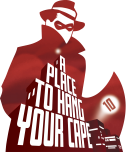Academic content often uses a formal style of writing. Humor is advised against in academic papers because such content is considered trivia and lightweight after all formal education deals with serious issues. But is there room for humor in academic essays? Of course, but it all depends on the topic being discussed and the attitude of the reader/professor. Imagine writing an essay on abortion or global warming and starting with a joke! Remember, something comic is meant to make you laugh. So it can be a joke or a funny personal story.
Importance of incorporating Comic Books in Education
Comic books and content can intersect with academia as long as the incorporated text and images help to convey the intended meaning more clearly. Comics are also a good supplement to help foster a love for books.
A comic story falls under the creative writing category. However, for the text to fall in an academic setting, it shouldn’t be offensive yet offer a fun read. Comic books containing colorful pictures capture the attention of young students keeping them engaged in the educational material.
When comics are introduced in academia as an educational tool, they help break the monotony of the syllabus and make it easier to discuss complex topics. They also help generate interest in various issues and increase a student’s understanding of writing techniques. Students in all academic levels that want to understand a certain topic better can buy essay from a subject expert. However, before you PayforEssay, it’s best to read a Review of The 4 Most Uprated Academic Writing Services – Business to get an idea of which companies are the best in the industry.
Stinky
Stinky is a Toon publication written by Eleanor Davis. The book is suitable for level 2 and educates kids on the importance of never judging a person or things by their cover. The story focuses on a monster Stinky who is scared of people and uses different tactics to scare a new kid who comes to the swap. Eventually, the monster conquers its fear and ends up making new friends.
The colorful texts, humor, and background animals will be a fun read for young students. The story is well written, which makes the text a great introduction to comic books. This book is a great educational tool because the author keeps changing the storytelling approaches while making the content engaging.
The Hilda Series
The Hilda series propelled Luke Pearson’s comic creation and made him a name worth taking note of in the comic book world. While it’s suitable for students aged between 5 to 11 years, the series features six books that students of all ages would love. Even college students with an eye for good comic books will find Hilda an interesting read.
Students who read the comic books will appreciate how Hilda’s main character has evolved with each new publication. Her character is relatable and inspirational. The combination of people, giants, elves, and trolls further gives the book an adventurous appeal. The success of the Hilda Series as a comic book motivated Netflix to turn the story into an animated series.
Maus
This graphic novel, written by Art Spiegelman, will educate a young student on social justice issues. The main theme is about the author’s experiences during the Holocaust. To make the book a fascinating read and appealing to students in lower classes, the experiences are represented in the form of animals.
For example, cats represent the Germans, the Polish are the pigs, and Jews are mice. The book is suitable for students aged 13 and above. While it’s hard to refute its educational element, parents or teachers should read this book before presenting it to kids because it has instances of violence, smoking cigarettes, and dehumanization.
Science Comics Series
This comic series educates students on various topics, including coral reefs, the solar system, volcanoes, robots and drones, plagues, dogs, flying machines, sharks, trees, rockets, weather, and much more. By the time a kid reads all the books, they will be educated on so many facts. The colorful and well-thought-out images capture attention and make learning fun. What’s great about this comic series is that it’s both educational and entertaining.
Each comic is filled with simple explanations and examples that make science fun. The uniqueness is made by the lessons, which can either be based on a creative story, historical fact, or nonfiction element. The stories are interwoven to simplify the educational content, making any Science Comic series a fantastic comic book started for students as young as six years.
